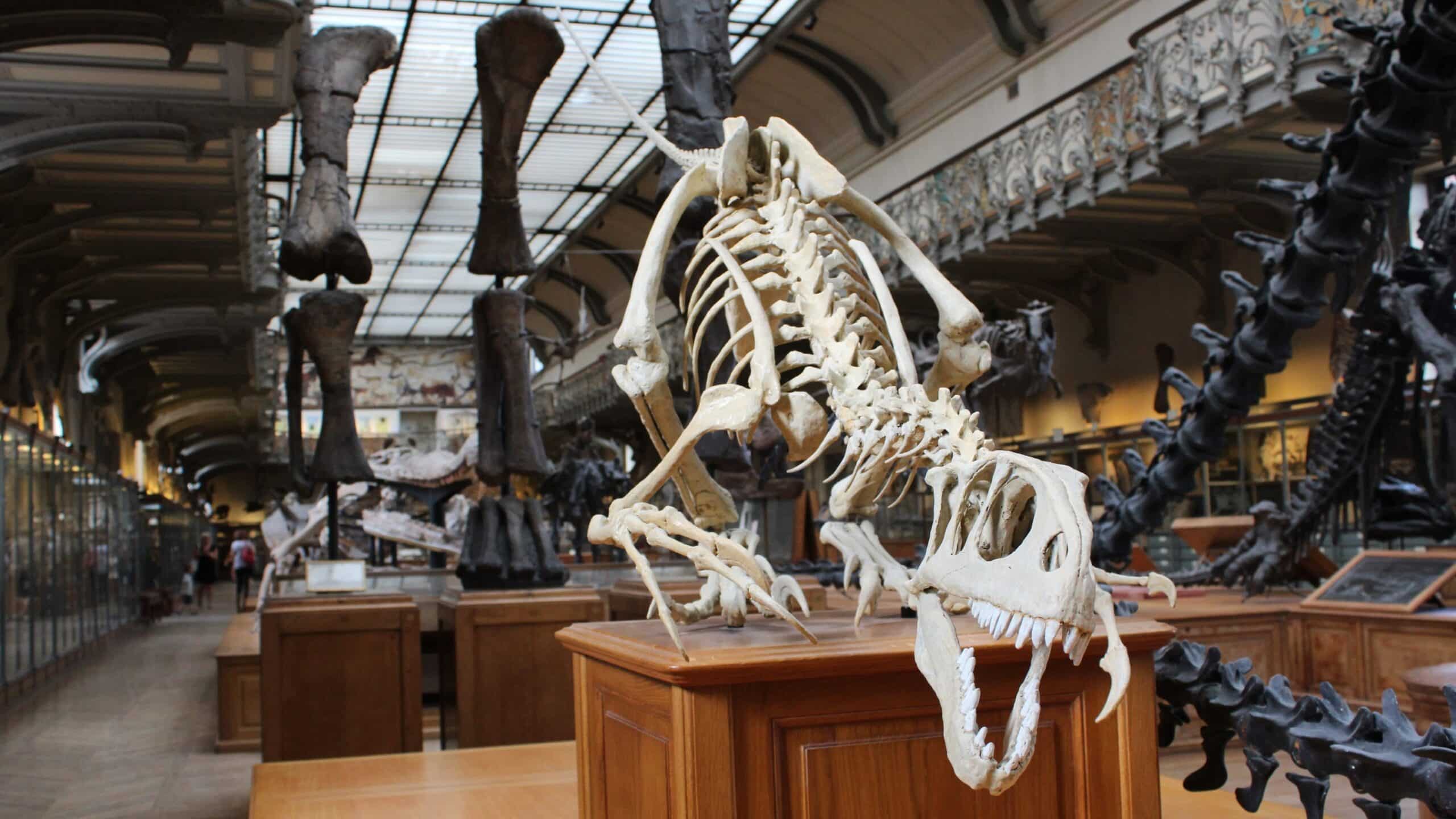Australian natural history museums offer a fascinating window into the continent’s rich biodiversity, ancient past, and evolving environmental story. Scattered across cities and regions, these institutions not only showcase remarkable fossils, minerals, and indigenous heritage but also drive scientific research, public education, and conservation efforts. The Australian Museum in Sydney, established in 1827, is the oldest in the country and houses over 21 million items spanning paleontology, entomology, and First Nations cultures. Likewise, the Melbourne Museum stands as one of the largest cultural and scientific institutions in the Southern Hemisphere, attracting more than 1.3 million visitors annually through immersive displays such as the Dinosaur Walk and Forest Gallery.
From prehistoric megafauna to opalized dinosaur fossils, Australian natural history museums preserve and present specimens that ignite curiosity and inspire awe. The Queensland Museum in Brisbane is home to one of the most complete skeletons of Muttaburrasaurus, a Cretaceous herbivore native to the region. Visitors can also engage with marine exhibits, insects, and geology collections—interactive experiences that welcomed over 1.2 million digital and on-site guests last year. Meanwhile, the South Australian Museum in Adelaide hosts the world’s largest collection of Australian Aboriginal cultural artifacts, exceeding 30,000 items, alongside cutting-edge paleontological research, including one of the world’s few full Diprotodon skeletons.
Technology has further transformed visitor experiences in museums like WA Museum Boola Bardip, where augmented reality and immersive storytelling allow guests to explore coral reefs or virtually walk beside extinct creatures. This institution, which reopened in 2020 following a $400 million redevelopment, holds over 8 million items and has integrated interactive digital learning zones to better serve modern audiences. In Tasmania, the Tasmanian Museum and Art Gallery combines art, science, and island-specific biodiversity in over 800,000 items, offering a local but globally relevant perspective.
In regional Australia, unique institutions continue to make major contributions. The Museum of Tropical Queensland in Townsville is particularly focused on coral reef and rainforest conservation, aligning closely with national and global sustainability goals. Their partnership with the Australian Institute of Marine Science enables valuable research on the health of the Great Barrier Reef. Conservation also plays a vital role at these museums. The Australian Centre for Wildlife Genomics, based in Sydney, leads forensic wildlife investigations and houses more than 70,000 tissue samples, contributing to global efforts to protect endangered species.
Not only do these museums engage scientists and conservationists, but they also serve students and families. Programs like the Melbourne Museum’s Children’s Gallery encourage hands-on exploration, welcoming over 400,000 children annually. Meanwhile, mobile outreach efforts such as Science on the Road, run by the Australian Museum, reach more than 180 schools in rural New South Wales every year.
Through dynamic storytelling, digital innovation, and robust research, these institutions continue to redefine what it means to connect people with nature and science. Whether you’re a curious traveler, a student, or a scientist, Australia’s natural history museums invite you to engage deeply with a continent teeming with stories from deep time to today.
Treasures of Time: Exploring Australia’s Most Iconic Natural History Museums
Australian Museum – Sydney’s Crown Jewel
The Australian Museum in Sydney, founded in 1827, is the oldest museum in Australia and one of the most prestigious Australian natural history museums. It houses over 21 million scientific specimens, including rare fossils, minerals, and Aboriginal cultural materials. The museum welcomes more than 400,000 visitors annually, offering extensive exhibitions on biodiversity and paleontology.
Melbourne Museum – A Blend of Culture and Science
The Melbourne Museum, with its striking modern architecture, features the Bunjilaka Aboriginal Cultural Centre, a dinosaur walk with full-size skeletons, and over 17 million collection items. It is one of the largest Australian natural history museums, attracting 1.3 million visitors in 2023, according to Museums Victoria’s annual report.
South Australian Museum – Fossils and First Nations Heritage
Home to the world’s largest collection of Australian Aboriginal cultural objects—more than 30,000 items—the South Australian Museum in Adelaide is an essential stop for cultural and scientific learning. It also boasts over 3 million natural science specimens, including Australia’s richest collection of megafauna fossils.
Western Australian Museum – Gateway to the Indian Ocean
The WA Museum Boola Bardip in Perth re-opened in 2020 after a $400 million redevelopment. It features cutting-edge exhibits that narrate the state’s natural and maritime history. With 8 million artifacts and specimens, it plays a vital role among Australian natural history museums.
Queensland Museum – Dinosaurs and Discovery
Located in Brisbane, the Queensland Museum is renowned for its fossil collection, especially the Muttaburrasaurus, a dinosaur discovered in Queensland. The museum recorded more than 1.2 million physical and digital visitors in 2022–2023 and features over 15 million items in its inventory.
Tasmanian Museum and Art Gallery – Island Biodiversity Focus
The Tasmanian Museum and Art Gallery holds nearly 800,000 natural science specimens and is particularly strong in Tasmanian flora and fauna. It also maintains crucial marine invertebrate collections used by international researchers, reinforcing its position in the network of Australian natural history museums.
Museum of Tropical Queensland – Coral and Rainforest Specialties
Located in Townsville, this museum showcases the wreck of HMS Pandora and focuses on coral reef and rainforest ecosystems. It supports research on the Great Barrier Reef and attracts over 120,000 visitors per year with its science-centered exhibits.
Behind the Glass: Rare Specimens and Fascinating Exhibits
The Lightning Ridge Opal Fossils – NSW’s Hidden Treasures
Among the most unique specimens in Australian natural history museums are the opalized fossils from Lightning Ridge. These colorful fossils include dinosaur bones and ancient marine reptiles, dating back 100 million years. The Australian Museum holds one of the richest opal fossil collections globally.
Muttaburrasaurus – Queensland’s Dinosaur Star
Discovered in 1963, the Muttaburrasaurus langdoni is one of the most complete dinosaur skeletons found in Australia. Housed at the Queensland Museum, it provides insights into Cretaceous-period herbivores. The museum’s dinosaur exhibit attracts over 200,000 annual visitors.
Diprotodon Skeleton – Giant Wombat of the Ice Age
The South Australian Museum showcases one of the best-preserved Diprotodon skeletons—Australia’s largest known marsupial, which could weigh over 2.5 tonnes. This Ice Age giant is central to discussions about megafauna extinction and climate change in Australian natural history museums.
Blue Whale Skeleton – Southern Ocean Titan
The South Australian Museum also features a full blue whale skeleton, over 25 meters long. It is one of only a few on public display in the world. The whale skeleton is part of the museum’s focus on marine biodiversity, drawing over 700,000 visitors annually.
Fossil Emu Egg – A 20,000-Year-Old Mystery
A rare fossilized emu egg displayed at the Tasmanian Museum offers insights into ancient bird species and climate patterns. Discovered during an excavation in the Midlands, it’s one of only five known specimens globally, adding value to Australian natural history museums.
Meteorites and Martian Fragments – Space Meets Earth
The Western Australian Museum features a collection of over 1,300 meteorites, including fragments from Mars and the Moon. These are studied by NASA and other global institutions, showcasing Australia’s importance in planetary science.
Butterfly and Insect Archives – Micro Marvels
With more than 1 million entomological specimens, the Melbourne Museum holds the largest insect collection in the Southern Hemisphere. These help scientists understand environmental changes, pollination, and species evolution, underpinning the scientific role of Australian natural history museums.
Learning Through Wonder: Education and Interactive Experiences
School Outreach Programs – Bridging Museums and Classrooms
Over 250,000 students participate in educational programs offered by Australian natural history museums each year. Institutions like the Australian Museum and Queensland Museum provide curriculum-aligned workshops, handling specimens, and virtual tours for rural schools.
Hands-On Discovery Zones for Children
Interactive exhibits like the Melbourne Museum’s Children’s Gallery allow kids to dig for fossils, examine bones, and touch native Australian animals. These experiences foster early scientific curiosity, with the Children’s Gallery hosting over 400,000 young visitors annually.
Virtual Reality Dinosaurs and Augmented Reality Fossils
Western Australian Museum Boola Bardip integrates virtual and augmented reality into its natural history displays. Visitors can walk with dinosaurs or dive into coral reefs. According to 2023 visitor data, 35% of attendees listed digital interactivity as a key highlight of their experience.
Workshops for Educators and Researchers
Museums like the South Australian Museum conduct annual training for over 600 teachers and researchers, ensuring accurate scientific dissemination. Their educational departments collaborate with universities for fossil handling and climate change education.
Public Lectures and Citizen Science Projects
Australian natural history museums engage the public through lectures by leading scientists and citizen science projects like biodiversity monitoring. In 2022, the Queensland Museum enrolled over 3,500 people in their “Find-a-Frog” and “Backyard Explorer” programs.
Special Needs Access and Sensory Rooms
Inclusivity is prioritized at the Tasmanian Museum, which offers sensory maps, visual guides, and quiet rooms. Their Access Art program allows neurodivergent children to explore exhibits in tailored, supportive settings.
Mobile Exhibits and Pop-Up Science Tents
Museums are extending their reach via mobile science centers. The Australian Museum’s Science on the Road van visited over 180 rural schools in 2023, serving communities that rarely have access to major institutions.
Preserving the Past: Conservation Efforts and Scientific Research
Climate-Controlled Storage for Delicate Specimens
Museums like the Melbourne Museum have developed climate-controlled repositories housing over 17 million items. These environments ensure preservation from heat, moisture, and light, critical for maintaining Australia’s fossil and mineral heritage in Australian natural history museums.
DNA Banks and Tissue Archives
The Australian Museum’s Australian Centre for Wildlife Genomics stores over 70,000 tissue samples and conducts research on endangered species. These genetic archives contribute to global biodiversity databases and aid in forensic wildlife investigations.
Coral and Marine Monitoring Programs
The Museum of Tropical Queensland collaborates with the Australian Institute of Marine Science on coral bleaching and reef biodiversity. Using museum-collected specimens, scientists track changes in coral health. In 2023, data from over 2,000 coral samples were analyzed.
Fossil Excavation and Restoration Labs
The Queensland Museum houses a paleontology lab where visitors can watch real-time fossil restoration. In 2022, the lab processed over 650 fossil specimens from sites like Winton and Richmond, contributing to publications in Nature and Journal of Vertebrate Paleontology.
Conservation of Aboriginal Cultural Items
South Australian Museum and Tasmanian Museum employ Indigenous curators and conservators to ensure respectful care and interpretation of over 60,000 cultural items. This approach redefines the role of Australian natural history museums in reconciliation and cultural conservation.
Botanical Archives and Herbariums
The Western Australian Museum contributes to plant conservation through its herbarium, which includes over 1 million pressed specimens. These help track climate-related shifts in plant distribution and support land management policies across the region.
International Research Collaboration and Open Data
Australian natural history museums are part of international research networks like GBIF and the Atlas of Living Australia. In 2023, over 5.2 million specimen records were digitized and made publicly accessible, empowering both researchers and citizen scientists worldwide.




